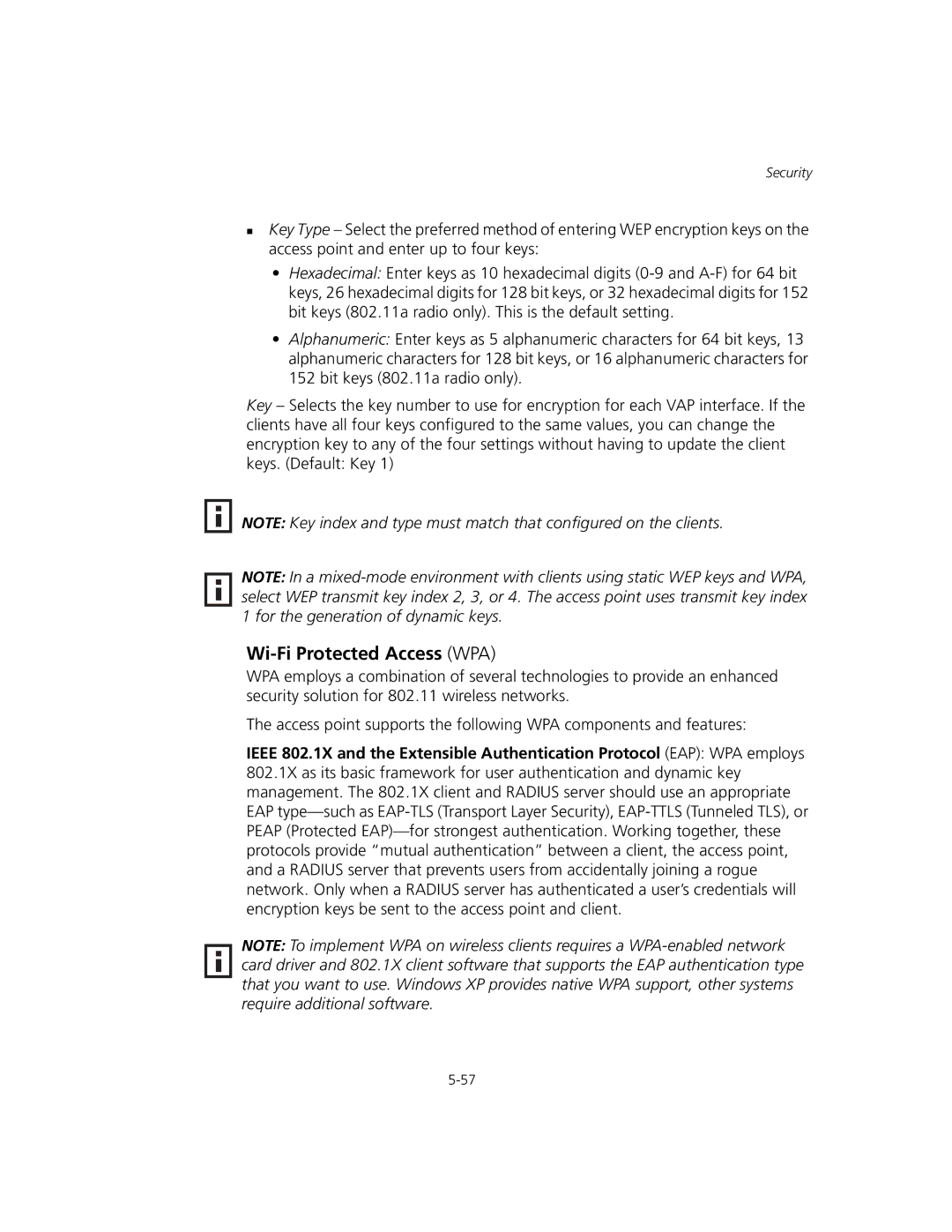Security
Key Type – Select the preferred method of entering WEP encryption keys on the access point and enter up to four keys:
•Hexadecimal: Enter keys as 10 hexadecimal digits
•Alphanumeric: Enter keys as 5 alphanumeric characters for 64 bit keys, 13 alphanumeric characters for 128 bit keys, or 16 alphanumeric characters for 152 bit keys (802.11a radio only).
Key – Selects the key number to use for encryption for each VAP interface. If the clients have all four keys configured to the same values, you can change the encryption key to any of the four settings without having to update the client keys. (Default: Key 1)
NOTE: Key index and type must match that configured on the clients.
NOTE: In a
Wi-Fi Protected Access (WPA)
WPA employs a combination of several technologies to provide an enhanced security solution for 802.11 wireless networks.
The access point supports the following WPA components and features:
IEEE 802.1X and the Extensible Authentication Protocol (EAP): WPA employs 802.1X as its basic framework for user authentication and dynamic key management. The 802.1X client and RADIUS server should use an appropriate EAP
NOTE: To implement WPA on wireless clients requires a
